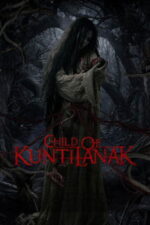Beyond the Uniform: Exploring the Worlds Within Boarding School Films
There’s something inherently fascinating about boarding school films, isn't there? It's more than just the crisp uniforms or the ivy-covered walls – it's the concentrated microcosm of society they represent. You take a group of young people, often from diverse backgrounds, and place them in an environment designed to shape them, to mold them into something… else. And that tension, that potential for rebellion or conformity, is fertile ground for some truly compelling storytelling.
Think about it: the very idea evokes a sense of isolation, of being removed from the familiar comforts of home. That feeling of displacement is central to so many boarding school narratives. In The Life and Adventures of Nicholas Nickleby, we see a young man thrust into this world after tragedy strikes, forced to navigate not just academic challenges but also the often-cruel realities of institutional life. It’s a classic “fish out of water” story, amplified by the power dynamics inherent in that setting – the authority figures, the established hierarchies, and the constant pressure to fit in.
But boarding schools aren't always presented as places of oppressive conformity. The Flying Classroom offers a lighter take, focusing on the camaraderie and rivalries that blossom within this enclosed environment. It’s about finding your tribe, even amidst intense competition – something I remember vividly from my own (less dramatic!) school days! That sense of belonging can be incredibly powerful, especially for those who feel like outsiders elsewhere.
Interestingly, the boarding school setting also lends itself beautifully to genre exploration. Child of Kuntilanak uses the isolated location and inherent mystery of a remote boarding school to amplify its horror elements – imagine being trapped in that kind of place with something sinister lurking around every corner! And then you have films like Stigma, which utilizes the enclosed environment to heighten the psychological torment of its protagonist, blurring the lines between reality and delusion. The walls themselves become symbolic of his confinement.
Even a film like Six Swedish Girls in a Boarding School – admittedly a bit more… unconventional – taps into that rebellious spirit. It’s a playful subversion of expectations, showing how young people can find joy and freedom even within restrictive structures. It's almost a reaction against the seriousness often associated with these institutions.
Ultimately, boarding school films aren’t just about the buildings or the rules; they’re about the human experience – resilience, identity formation, friendship, rebellion, and the search for belonging. They offer us a glimpse into worlds both familiar and strange, prompting us to consider what it means to grow up, to find your place, and to challenge the systems that shape you.
What boarding school film has you thinking about your own experiences? I'd love to hear!























